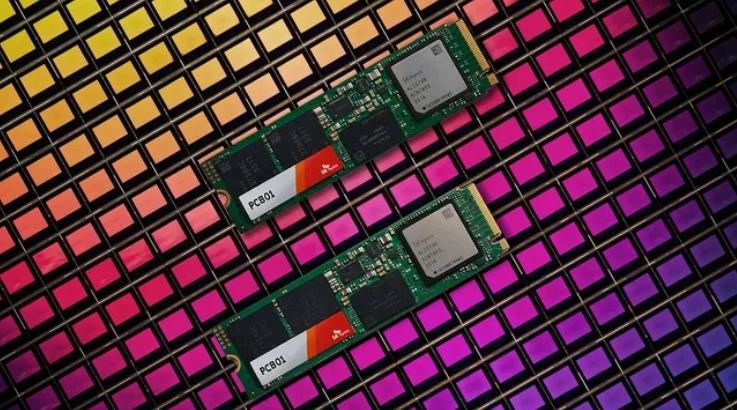SK Hynix Completes Acquisition of Intel's NAND Business
Recently, South Korean memory giant SK Hynix officially completed its acquisition of Intel's NAND flash memory and SSD business, marking the conclusion of a transaction that spanned nearly five years. This acquisition has not only reshaped the competitive landscape of the global memory industry but also had a profound impact on the future development of both SK Hynix and Intel.
Background and Transaction Process
On October 20, 2020, SK Hynix and Intel jointly announced the signing of an acquisition agreement in South Korea. According to the agreement, SK Hynix agreed to acquire Intel's NAND SSD business, NAND components, wafer business, and Intel's NAND flash memory manufacturing facility in Dalian, China, for a total of $9 billion. However, Intel will continue to retain its unique Optane business.
The acquisition was carried out in two phases. The first phase was completed at the end of 2021, when SK Hynix acquired Intel's SSD business and NAND production facilities in Dalian for $6.61 billion. Intel's enterprise SSD business was renamed Solidigm and continued to operate under the new brand name. However, this initial transaction only transferred physical assets and SSD-related business, excluding Intel's NAND intellectual property, R&D infrastructure, and key employees focused on NAND development.
In March 2025, the acquisition entered its second phase, with SK Hynix paying the remaining $2.24 billion to acquire the remaining assets from Intel, including intellectual property related to the production and design of NAND flash memory wafers, R&D personnel, and employees at the Dalian factory. With the final payment of $1.9 billion, SK Hynix officially acquired Intel's flash memory intellectual property and related employees, completing the full acquisition of Intel's NAND business.
Business Restructuring and Market Impact
1. Impact on SK Hynix
The acquisition significantly enhanced SK Hynix's competitiveness in the global NAND market, increasing its market share from 12% to 20%, making it the world's second-largest NAND supplier after Samsung (33.9%). Additionally, Intel's 144-layer 3D NAND technology and enterprise SSD customer resources (such as AWS and Microsoft Azure) will accelerate SK Hynix's development of advanced processes beyond 200 layers.
2. Impact on Intel
By divesting its NAND business, Intel strengthened its balance sheet and financial flexibility, enabling it to focus more on its CPU, AI, and data center businesses. With the completion of the transaction, Intel will fully exit the NAND flash memory market, shifting the storage industry from a "tripartite balance among the U.S., Japan, and South Korea" to a "Korean-dominated" landscape.
3. Impact on the Storage Industry
SK Hynix's rise signals that future competition in the global storage market will intensify, with technological innovation and capacity deployment becoming critical factors for success. As a subsidiary of SK Hynix, Solidigm has demonstrated outstanding performance in storage technology innovation for the AI era, with products such as liquid-cooled enterprise solid-state drives (eSSDs) providing efficient storage solutions for AI infrastructure. Furthermore, as Samsung and SK Hynix plan to raise NAND flash memory prices, the industry may enter a new cycle of price increases.
Future Outlook
After completing the acquisition of Intel's NAND business, SK Hynix's position in the storage industry has become more solid. Moving forward, SK Hynix will need to balance the integration of Intel's technical architecture with its own product lines to maximize synergies. Additionally, as AI technology continues to evolve, the storage industry will face more opportunities and challenges. Whether SK Hynix can maintain its leading position in the highly competitive market remains a topic worth continued attention.

Conevo ics online store
Conevo is an independent electronic component distributor focused on supplying ic components in short supply to customers from all over the world. At Conevo, you can quickly obtain your in-demand ics or achieve one-stop ic procurement for your electronics projects. Here are some of the recent hot and popular components!
1. The AD7656YSTZ is a 16-bit analog-to-digital converter (ADC) featuring six channels with simultaneous sampling, designed for high-precision signal acquisition. It operates at 250 kSPS, supports bipolar input signals, and integrates low-power iCMOS technology, making it suitable for applications such as power line monitoring and industrial control systems.
2. The MSP430FG439IPNR is a 16-bit ultra-low-power MCU featuring 60KB of flash memory, 2KB SRAM, a 12-bit ADC, dual 12-bit DAC, three configurable operational amplifiers, a 128-segment LCD driver, and an 80-pin LQFP package. It operates at 8 MHz and is designed for energy-efficient applications with features like low-power modes and fast wake-up capabilities.
3. The AD5627RBRMZ-1REEL7 is a dual 12-bit nanoDAC with a 2.5V, 5ppm/°C on-chip reference, I2C interface, and operates from a 2.7V to 5.5V power supply. It features per-channel power-down, hardware LDAC and CLR functions, and is designed for applications such as process control, data acquisition systems, and portable battery-powered instruments.
Website: www.conevoelec.com
Email: info@conevoelec.com








